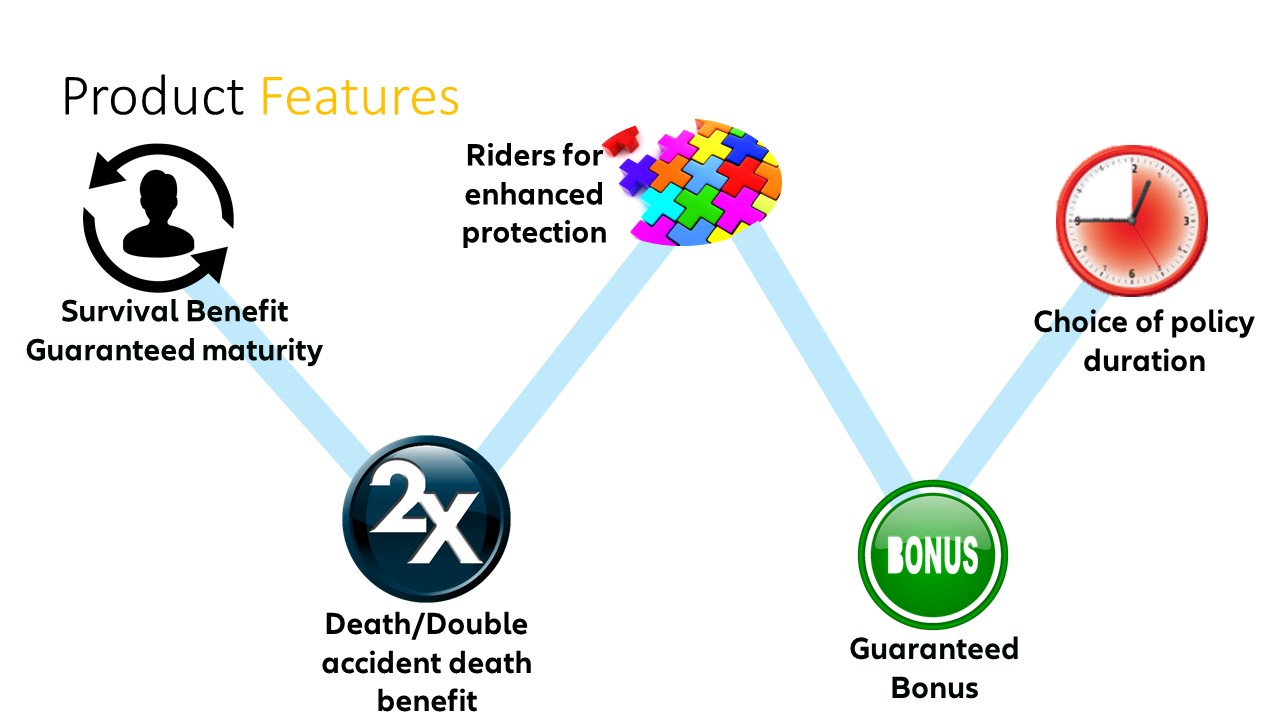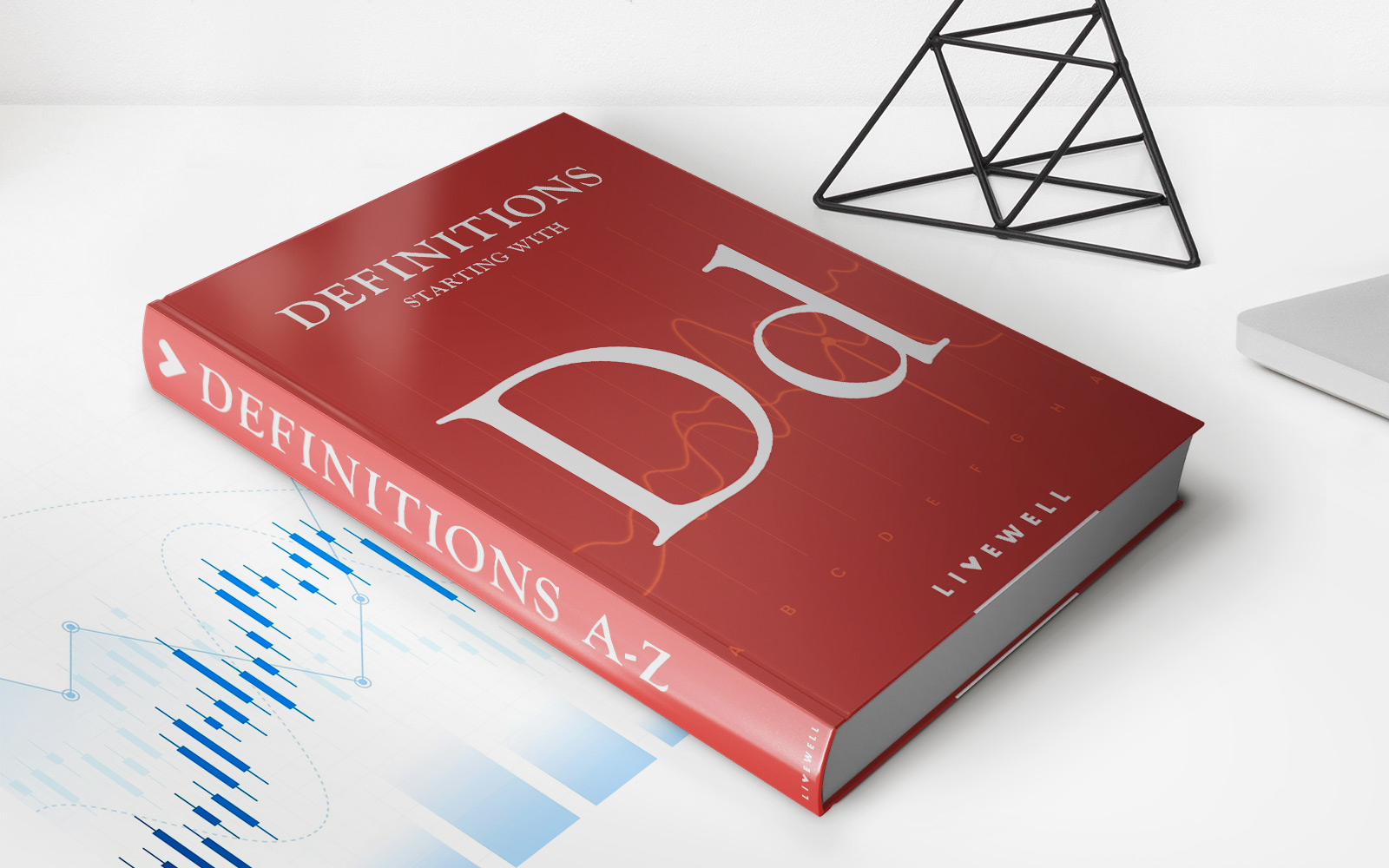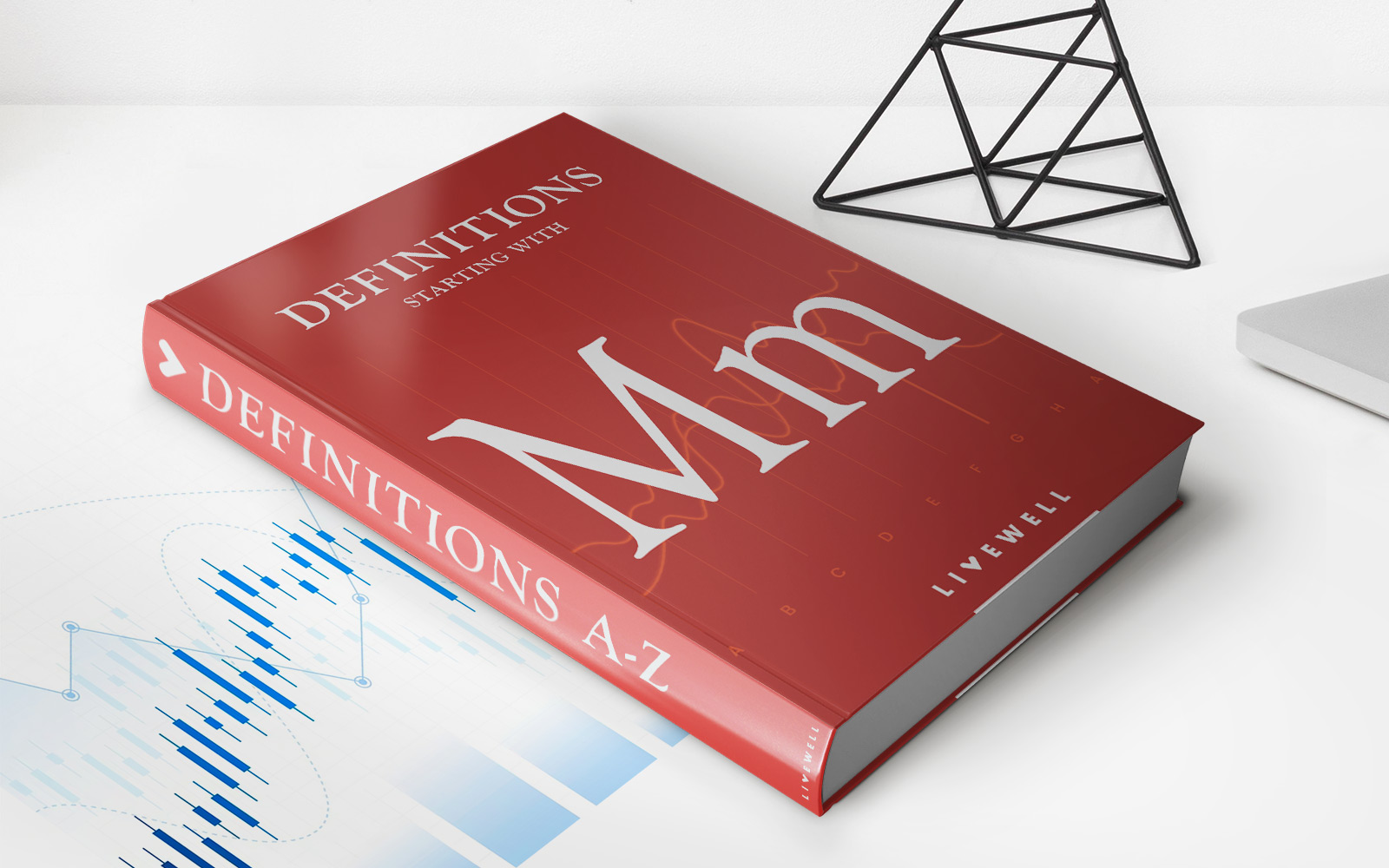Home>Finance>What Is A Corridor In Relation To A Universal Life Insurance Policy?


Finance
What Is A Corridor In Relation To A Universal Life Insurance Policy?
Published: October 15, 2023
Learn about corridors in universal life insurance policies and how they can affect your financial strategy. Understand the importance of managing your finances when it comes to insurance.
(Many of the links in this article redirect to a specific reviewed product. Your purchase of these products through affiliate links helps to generate commission for LiveWell, at no extra cost. Learn more)
Table of Contents
- Introduction
- Definition of a Corridor in Relation to a Universal Life Insurance Policy
- Purpose and Importance of a Corridor in a Universal Life Insurance Policy
- Factors Affecting the Size and Maintenance of the Corridor
- Role of the Corridor in Determining Policy Performance
- Understanding the Concept of Corridor Adjustments
- Benefits and Drawbacks of a Corridor in a Universal Life Insurance Policy
- Practical Examples and Case Studies Involving Corridors in Universal Life Insurance Policies
- Regulatory Considerations and Guidelines Related to Corridors in Universal Life Insurance Policies
- Conclusion
Introduction
Welcome to the world of universal life insurance policies! If you’re new to the intricacies of life insurance, you may have come across the term “corridor” while researching universal life policies. What exactly does it mean, and how does it relate to your insurance coverage? In this article, we will explore the concept of a corridor in relation to a universal life insurance policy.
A universal life insurance policy is a type of permanent life insurance that provides both a death benefit and a cash value component. Unlike term life insurance, which only covers you for a specified period of time, universal life policies offer lifelong coverage and the potential for cash accumulation over time. This cash value can be used for various purposes, such as supplementing retirement income or funding future expenses.
Within a universal life insurance policy, the corridor refers to the specific range between the policy’s death benefit and the cash value. This corridor acts as a buffer, ensuring that the policy remains in compliance with certain regulatory requirements and remains classified as life insurance rather than an investment vehicle.
While the concept of a corridor may seem complex, its role in a universal life insurance policy is crucial. It plays a significant role in determining the policy’s performance, potential growth, and overall value. By understanding the purpose and mechanics of the corridor, policyholders can have a clearer picture of how their universal life insurance policy functions and how it aligns with their financial goals.
Throughout this article, we will delve into the definition of a corridor, its purpose, the factors that influence its size and maintenance, and its impact on policy performance. Additionally, we will explore practical examples and case studies to illustrate how the corridor affects policy outcomes. Furthermore, we will discuss regulatory considerations and guidelines surrounding corridors in universal life insurance policies.
Now that we’ve laid the groundwork, let’s dive deeper into the world of corridors and universal life insurance policies to gain a comprehensive understanding of this essential component.
Definition of a Corridor in Relation to a Universal Life Insurance Policy
When it comes to understanding universal life insurance policies, it’s essential to grasp the concept of a corridor. In the context of a universal life policy, the corridor refers to the gap or range between the policy’s death benefit and the cash value.
At its core, the corridor acts as a protective boundary, ensuring that the policy maintains its classification as life insurance rather than an investment product. This distinction is crucial because life insurance policies enjoy certain tax advantages, including tax-free death benefits for beneficiaries and tax-deferred growth of the cash value component.
The size of the corridor is determined by the policy’s death benefit and the cash value. It’s important to note that the corridor is not a fixed value, but rather a percentage range of the policy’s death benefit. This means that as the cash value grows, the corridor expands, allowing for more cash accumulation within the policy.
The corridor serves multiple purposes within a universal life insurance policy. Firstly, it helps to ensure that the policy remains within the guidelines set by insurance regulators. These guidelines aim to distinguish true life insurance policies from investment vehicles that offer excessive tax advantages.
Secondly, the corridor allows for flexibility in the policy’s cash value growth. It provides policyholders with the opportunity to accumulate cash within the policy, which can be utilized for various purposes, such as supplementing retirement income, funding education expenses, or addressing other financial needs.
It’s important to understand that the corridor acts as a buffer zone. If the cash value exceeds the upper limit of the corridor, the policy risks being classified as a Modified Endowment Contract (MEC). MEC classification triggers different tax treatment and limits the advantages associated with a traditional life insurance policy. Therefore, managing the corridor size is crucial to ensure the policy remains compliant with regulatory requirements.
Closely related to the concept of a corridor is the corridor adjustment. Corridor adjustments occur periodically to ensure that the policy remains within the designated range. These adjustments can be made by either increasing the death benefit, decreasing the cash value, or a combination of both. It’s important to note that corridor adjustments can have implications on the cost and performance of the policy, and should be thoroughly evaluated before making any changes.
By understanding the definition and significance of a corridor in relation to a universal life insurance policy, policyholders can make informed decisions regarding their coverage. In the next section, we will explore the purpose and importance of maintaining an appropriate corridor size.
Purpose and Importance of a Corridor in a Universal Life Insurance Policy
The corridor plays a crucial role in the structure and functionality of a universal life insurance policy. Its purpose is twofold: to ensure regulatory compliance and to provide flexibility and growth potential for policyholders.
One of the primary reasons for the existence of a corridor is to maintain the policy’s classification as life insurance rather than an investment product. Life insurance policies enjoy certain tax advantages, such as tax-free death benefits and tax-deferred growth of the cash value component. By having a designated range or corridor, the policy remains within the bounds of being classified as life insurance, preserving these tax benefits.
Regulatory guidelines set by insurance authorities dictate the maximum permissible corridor size to prevent the policy from becoming an investment vehicle disguised as life insurance. These guidelines ensure that the policy remains primarily focused on providing a death benefit rather than functioning solely as a savings or investment vehicle.
The corridor also provides flexibility and growth opportunities for policyholders. The cash value component of a universal life insurance policy can accumulate over time, providing a potential source of funds for various financial needs. The corridor allows for the growth and accumulation of cash within the policy, which can be utilized for purposes such as supplementing retirement income, funding education expenses, or addressing unforeseen financial emergencies.
By having a corridor, policyholders can enjoy the benefits of both life insurance coverage and potential cash value growth. It provides the best of both worlds, allowing individuals to protect their loved ones while also building a financial safety net for themselves.
Maintaining an appropriate size for the corridor is of utmost importance. If the cash value of the policy exceeds the upper limit of the corridor, the policy risks being classified as a Modified Endowment Contract (MEC). A MEC classification changes the tax treatment of the policy, limiting the tax advantages associated with traditional life insurance coverage.
On the other hand, if the cash value falls below the lower limit of the corridor, the policy may not be meeting the policyholder’s financial goals and objectives effectively. It may result in a lack of sufficient cash value growth and potentially limit the policy’s usefulness as a financial planning tool.
Due to the potential implications of exceeding or falling below the corridor limits, it is important for policyholders to regularly monitor and manage their policy’s corridor size. This may involve making adjustments to the death benefit or cash value to ensure the policy remains in compliance and aligned with the policyholder’s financial objectives.
In the upcoming section, we will explore the factors that can affect the size and maintenance of a corridor in a universal life insurance policy.
Factors Affecting the Size and Maintenance of the Corridor
The size and maintenance of the corridor in a universal life insurance policy can be influenced by various factors. These factors play a crucial role in determining the growth potential of the policy’s cash value and the overall effectiveness of the policy. Let’s explore some of the key factors that affect the size and maintenance of the corridor.
1. Premiums: The amount and frequency of premium payments impact the size of the corridor. Higher premium payments generally lead to a larger corridor, allowing for more cash accumulation in the policy. Conversely, lower premium payments may result in a narrower corridor, limiting the growth potential of the policy’s cash value.
2. Interest Rates: Universal life insurance policies typically earn interest on the cash value component. The prevailing interest rates can impact the growth of the policy’s cash value, which in turn affects the size of the corridor. Higher interest rates can lead to a larger corridor, while lower interest rates may result in a narrower corridor.
3. Expenses and Charges: Universal life insurance policies often come with various fees, expenses, and mortality charges. These costs may decrease the cash value growth and narrow the corridor. It’s essential to understand the impact of these expenses on the policy’s performance and corridor size when evaluating and maintaining the policy.
4. Policyholder Contributions: Additional contributions made by the policyholder, such as premium overpayments or lump-sum deposits, can have an impact on the corridor size. These additional contributions can expand the corridor and provide greater flexibility for cash accumulation within the policy.
5. Policy Design Options: Some policy design options, such as the inclusion of riders or additional coverages, can affect the size of the corridor. These options may alter the cost structure of the policy and impact the balance between the death benefit and cash value components, thus influencing the corridor size.
6. Policyholder Age and Health: The age and health of the policyholder can also influence the size of the corridor. Younger and healthier individuals generally have a longer life expectancy, which can result in a larger corridor to accommodate potential cash value growth over time.
7. Economic and Market Conditions: Economic and market conditions, such as inflation rates and investment returns, can impact the performance of the policy’s cash value component. These conditions can influence the growth potential and size of the corridor, as well as the overall value of the policy.
Maintaining an appropriate size for the corridor requires regular monitoring and adjustments. Policyholders should periodically review their policy’s performance, expenses, and objectives to ensure that the corridor aligns with their financial goals. Consulting with a financial professional or insurance advisor can provide valuable guidance in managing and maintaining an optimal corridor size.
In the next section, we will explore the role of the corridor in determining the performance and outcomes of a universal life insurance policy.
Role of the Corridor in Determining Policy Performance
The corridor in a universal life insurance policy plays a vital role in determining the performance and outcomes of the policy. It serves as a crucial factor in balancing the policy’s death benefit and cash value components, ensuring the policy remains compliant and responsive to the policyholder’s financial goals. Let’s explore the specific role of the corridor in determining policy performance.
1. Cash Value Growth: The corridor provides the policyholder with the opportunity for cash value growth within the policy. As the cash value component accumulates, it can be utilized for various financial needs, such as supplementing retirement income or funding education expenses. The size of the corridor directly impacts the potential for cash value growth, allowing the policyholder to maximize the benefits and flexibility offered by the policy.
2. Flexibility in Premium Payments: The corridor size influences the policyholder’s ability to adjust premium payment amounts or frequencies. A wider corridor offers more flexibility in premium payment options, allowing policyholders to adapt their premiums to their changing financial circumstances. This flexibility can be especially useful when facing financial challenges or seeking to optimize the policy’s cash value growth.
3. Policy Customization: The corridor provides room for policyholders to customize their universal life insurance policies to meet their specific needs. By adjusting the size of the death benefit within the corridor limits, policyholders can tailor their coverage to align with their financial goals and obligations. This customization ensures that the policy remains relevant and adaptable over time.
4. Policy Performance Evaluation: The corridor serves as a benchmark for evaluating the performance of the policy. By monitoring the growth of the cash value within the corridor, policyholders can gauge the policy’s effectiveness and determine if it is meeting their intended objectives. If the policy’s performance falls below expectations, adjustments to the premium payments or other policy elements may be necessary to optimize the corridor and enhance the policy’s overall performance.
5. Risk Management: The corridor also plays a role in managing the risk associated with the policy. By maintaining an appropriate size for the corridor, policyholders can mitigate the risk of triggering Modified Endowment Contract (MEC) classification, which would result in adverse tax consequences. Proper corridor management ensures that the policy retains its status as life insurance rather than becoming classified as an investment vehicle.
It’s important to note that the corridor is not a static component of the policy. It can be adjusted periodically through corridor adjustments, which involve modifying the death benefit or cash value to maintain the desired size and performance of the corridor. These adjustments require careful consideration and evaluation, as they can impact the policy’s cost structure and potential cash value growth.
Understanding the role of the corridor in determining policy performance allows policyholders to make informed decisions regarding their coverage. In the next section, we will explore the concept of corridor adjustments in greater detail.
Understanding the Concept of Corridor Adjustments
Corridor adjustments are an essential aspect of managing a universal life insurance policy. These adjustments involve modifying the death benefit or cash value to maintain the desired size and performance of the corridor. Let’s dive deeper into the concept of corridor adjustments and how they impact the policy.
Corridor adjustments are typically made to ensure compliance with regulatory requirements and to align the policy with the policyholder’s changing financial goals. These adjustments can be triggered by various factors, including changes in the policyholder’s financial situation, life events, or shifts in the overall economic landscape.
One type of corridor adjustment involves increasing the death benefit. This adjustment can be made by applying for an increase in the policy’s coverage amount. Increasing the death benefit expands the size of the corridor, allowing for greater cash value growth within the policy. This adjustment may be warranted, for example, if the policyholder’s personal or financial circumstances have changed, and there is a need for additional coverage.
Conversely, if the policyholder wishes to reduce the death benefit or increase the cash value, a corridor adjustment can be made by redirecting policy premiums towards the cash value component. This adjustment narrows the corridor, potentially allowing for accelerated cash value growth and emphasizing the savings or investment aspect of the policy.
It’s important to note that corridor adjustments can have implications on the policy’s cost structure and performance. Increasing the death benefit may result in higher premium payments, as the policyholder is taking on more coverage. On the other hand, increasing the cash value may involve redirecting premiums away from the death benefit, potentially reducing the policy’s coverage amount.
Before making corridor adjustments, it is crucial for policyholders to carefully evaluate their financial goals, risk tolerance, and long-term objectives. Consulting with a financial professional or insurance advisor can provide valuable guidance in determining the most appropriate corridor adjustment strategy.
It’s also vital to consider the impact of any corridor adjustments on future policy performance. Changes in the corridor size can affect the policy’s cash value growth, ability to accumulate funds, and potential tax consequences. Understanding the potential benefits and drawbacks of corridor adjustments allows policyholders to make informed decisions regarding their coverage.
In summary, corridor adjustments are a mechanism to modify the death benefit or cash value of a universal life insurance policy, ensuring that it aligns with the policyholder’s financial goals and compliance with regulatory requirements. These adjustments require careful consideration and evaluation, taking into account the policyholder’s unique circumstances and objectives. Regularly reviewing and adjusting the corridor size can optimize the policy’s performance and help it remain a valuable financial planning tool.
In the next section, we will explore the benefits and drawbacks of having a corridor in a universal life insurance policy.
Benefits and Drawbacks of a Corridor in a Universal Life Insurance Policy
A corridor in a universal life insurance policy offers both benefits and drawbacks. Understanding these advantages and disadvantages is crucial in evaluating the suitability and effectiveness of this component. Let’s explore the benefits and drawbacks of having a corridor in a universal life insurance policy.
Benefits:
- Tax Advantages: A corridor allows the policy to maintain its classification as life insurance, providing tax advantages such as tax-free death benefits for beneficiaries and tax-deferred growth of the cash value component. These tax benefits can enhance the policy’s overall value and help policyholders protect their loved ones while also building a financial safety net.
- Flexibility for Cash Accumulation: The corridor provides the policyholder with the opportunity to accumulate cash within the policy. This cash accumulation can be used for various financial needs, such as supplementing retirement income, funding education expenses, or addressing unforeseen financial emergencies. The flexibility offered by the corridor allows individuals to adapt their policy to their changing financial circumstances and objectives.
- Customization: The corridor allows policyholders to customize their universal life insurance policies to meet their specific needs. By adjusting the size of the death benefit within the corridor limits, policyholders can tailor their coverage to align with their financial goals and obligations. This customization ensures that the policy remains relevant and adaptable over time.
Drawbacks:
- Impact on Premiums: Adjusting the corridor size through corridor adjustments can have implications on the policy’s cost structure and premium payments. Increasing the death benefit may result in higher premiums, while increasing the cash value may involve redirecting premiums away from the death benefit, potentially reducing the coverage amount.
- Regulatory Compliance: The corridor is designed to ensure compliance with regulatory guidelines that distinguish life insurance policies from investment vehicles. However, managing the corridor size requires ongoing monitoring to prevent it from exceeding the upper limit and triggering Modified Endowment Contract (MEC) classification. MEC classification could result in adverse tax consequences and limit the policy’s advantages.
- Policy Performance: The size of the corridor can impact the policy’s cash value growth potential. A narrower corridor may limit the growth potential, potentially affecting the policy’s performance in meeting long-term financial goals. Continuous evaluation and adjustment of the corridor are necessary to optimize the policy’s performance.
Understanding the benefits and drawbacks of a corridor in a universal life insurance policy helps policyholders make informed decisions regarding their coverage. It is important to carefully assess personal financial objectives, risk tolerance, and long-term goals when considering the size and maintenance of the corridor.
In the next section, we will explore practical examples and case studies involving corridors in universal life insurance policies to understand their real-world implications.
Practical Examples and Case Studies Involving Corridors in Universal Life Insurance Policies
Examining practical examples and case studies can provide valuable insights into how corridors function in real-world scenarios. Let’s explore a few examples and case studies involving corridors in universal life insurance policies.
Example 1:
John, a 35-year-old policyholder, purchased a universal life insurance policy with a death benefit of $500,000 and an initial cash value of $50,000. The policy has a corridor of 20% of the death benefit.
Over time, John’s financial situation improved, and he decided to utilize the policy’s cash value as a savings vehicle. By making regular premium payments and supplementing the policy with additional contributions, he managed to increase the cash value to $100,000.
In this example, the corridor expansion allowed for John to accumulate more cash value within the policy, providing him with a growing source of funds for future needs.
Case Study 2:
Emily, a 50-year-old policyholder, has held a universal life insurance policy for over a decade. Over time, the policy’s cash value has grown significantly, nearing the upper limit of the corridor range.
To avoid triggering a Modified Endowment Contract (MEC) classification and its accompanying tax consequences, Emily chose to make corridor adjustments by increasing the death benefit. This adjustment not only helped maintain the policy’s classification as life insurance but also provided her with additional coverage to protect her family’s financial future.
These case studies illustrate how the size and maintenance of the corridor can impact policyholders’ ability to accumulate cash value and customize their coverage according to their evolving needs and goals.
It’s important to note that every individual’s situation is unique, and the corridor adjustments required will depend on specific circumstances. Consulting with a financial professional or insurance advisor can provide personalized guidance and help policyholders navigate the complexities of corridor management and optimization.
In the next section, we will explore regulatory considerations and guidelines related to corridors in universal life insurance policies.
Regulatory Considerations and Guidelines Related to Corridors in Universal Life Insurance Policies
Corridors in universal life insurance policies are subject to regulatory considerations and guidelines to ensure compliance and maintain the integrity of the insurance industry. These considerations help distinguish true life insurance policies from investment vehicles and protect policyholders’ interests. Let’s delve into the regulatory considerations and guidelines related to corridors in universal life insurance policies.
Insurance regulatory bodies set specific guidelines regarding the size and maintenance of corridors. These guidelines aim to prevent policies from being classified as Modified Endowment Contracts (MECs). MEC classification occurs when the cash value within a policy exceeds certain limits, resulting in adverse tax treatment and the loss of certain tax advantages associated with traditional life insurance.
Regulations typically establish the maximum corridor size as a percentage of the policy’s death benefit. This percentage can vary depending on factors such as the policyholder’s age, health, and the specific regulatory authority governing the policy.
Additionally, insurance regulators may require regular reporting on the corridor size and policy performance from insurance companies. This reporting ensures transparency and compliance with the established guidelines.
Policyholders should be aware of these regulations and diligently monitor the size of their policy’s corridor to avoid inadvertently triggering MEC classification. Regular review of the policy’s performance, premium payments, and other financial aspects can help policyholders stay within the prescribed corridor limits and maintain the policy’s life insurance classification.
It’s essential for policyholders to work with certified insurance professionals or financial advisors who have expertise in insurance regulations. These professionals can ensure that policyholders are well-informed about the regulatory requirements surrounding corridors and the importance of maintaining compliance.
Understanding and adhering to regulatory considerations and guidelines related to corridors in universal life insurance policies helps protect policyholders’ interests and the integrity of the insurance industry. By staying informed and partnering with knowledgeable professionals, policyholders can navigate the complexities of insurance regulations and confidently manage their policies.
In the last section, we will conclude our exploration of corridors in universal life insurance policies.
Conclusion
In conclusion, a corridor in a universal life insurance policy is a crucial component that plays a significant role in shaping the policy’s performance and outcomes. The corridor acts as a buffer between the death benefit and the cash value, ensuring that the policy remains classified as life insurance and retains the associated tax advantages.
The corridor offers several benefits to policyholders, such as tax advantages, flexibility for cash accumulation, and customization of coverage. It allows policyholders to maximize the benefits of life insurance while also building a financial safety net for their future needs.
However, it is important to consider the potential drawbacks of a corridor, such as the impact on premiums, regulatory compliance, and the need for ongoing monitoring and adjustments. Managing the corridor size requires careful evaluation, regular review, and potentially making corridor adjustments to align the policy with changing financial goals and objectives.
Policyholders should be aware of the regulatory considerations and guidelines surrounding corridors in universal life insurance policies. Adhering to these regulations ensures compliance and safeguards the policyholder’s interests.
Monitoring and optimizing the corridor size can significantly impact the policy’s performance, cash value growth, and overall effectiveness as a financial planning tool. Consulting with insurance professionals or financial advisors with expertise in corridors and insurance regulations can provide invaluable guidance and ensure policyholders make informed decisions.
In summary, understanding the corridor in a universal life insurance policy empowers policyholders to make the most of their coverage, customize their policies to their needs, and navigate the regulatory landscape effectively. By grasping the concept and implications of corridors, policyholders can enhance their financial security and meet their long-term objectives.














